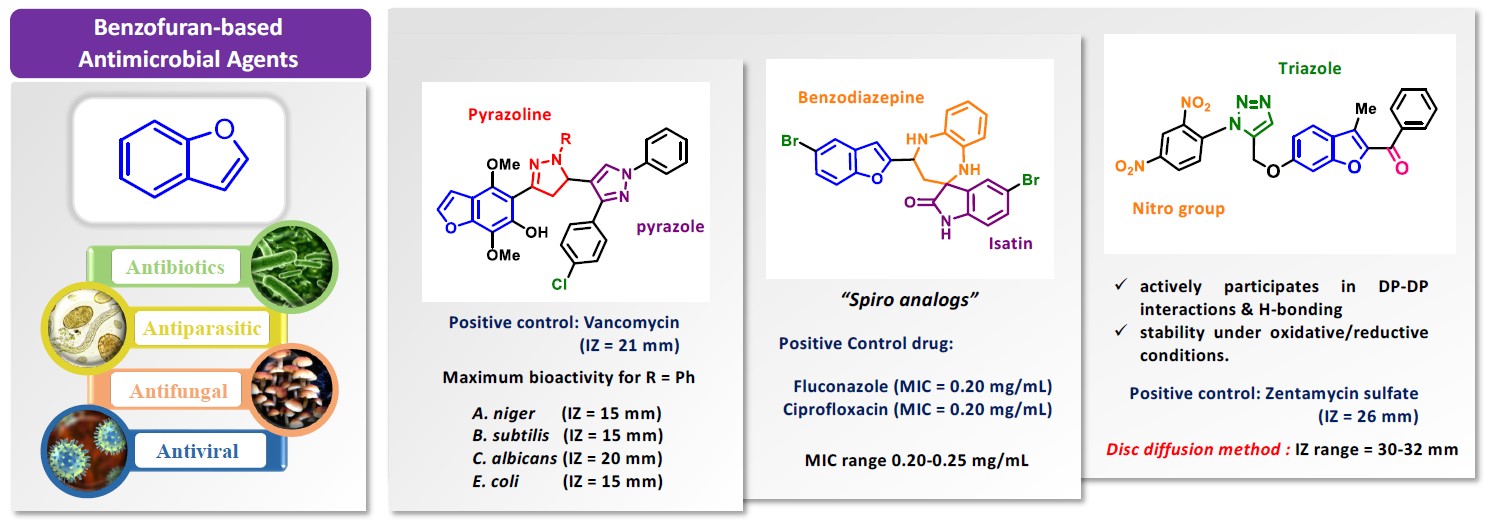Benzofurans/2,3-dihydrobenzofurans as antimicrobial agents

DOI:
https://doi.org/10.62110/sciencein.jmc.2025.1220Keywords:
Benzofurans, Antimicrobial activity, structure-activity relationships, Heterocyclic drugs, Heterocycles, Antibacterial activity, antimicrobial drug resistance, antimicrobial resistance (AMR), benzofuran analogs, molecular hybridizationAbstract
Benzofurans, a class of compounds renowned for their diverse pharmacological applications, have garnered considerable attention in recent years because of their promising antimicrobial properties. Due to rising antimicrobial resistance (AMR) to available antibiotics, a search for novel antimicrobial agents with new modes of action becomes an essential step in antimicrobial drug discovery. We have compiled the literature reports on new benzofuran analogs in combination with other heterocycles and their efficacy in combating microbial infections. The versatility of the benzofuran core, along with an increment in its potency on inclusion of heterocyclic scaffolds, has been highlighted throughout. In support of the inhibitory properties of these compounds, additional computational studies and structure-activity relationship (SAR) studies are also described. This review also highlights the discovery and development of antimicrobial agents through molecular hybridization and discusses the change in bioactivity of benzofurans on altering the substituents, i.e., five/six/seven-membered heterocycles, electron-donating/withdrawing groups on the core structure.
Downloads
Published
Issue
Section
URN
License
Copyright (c) 2025 Jyoti Rajora, Manoj Kumar, Anju Bajaj, Brijesh Rathi, Priyamvada Singh

This work is licensed under a Creative Commons Attribution-NonCommercial-NoDerivatives 4.0 International License.
